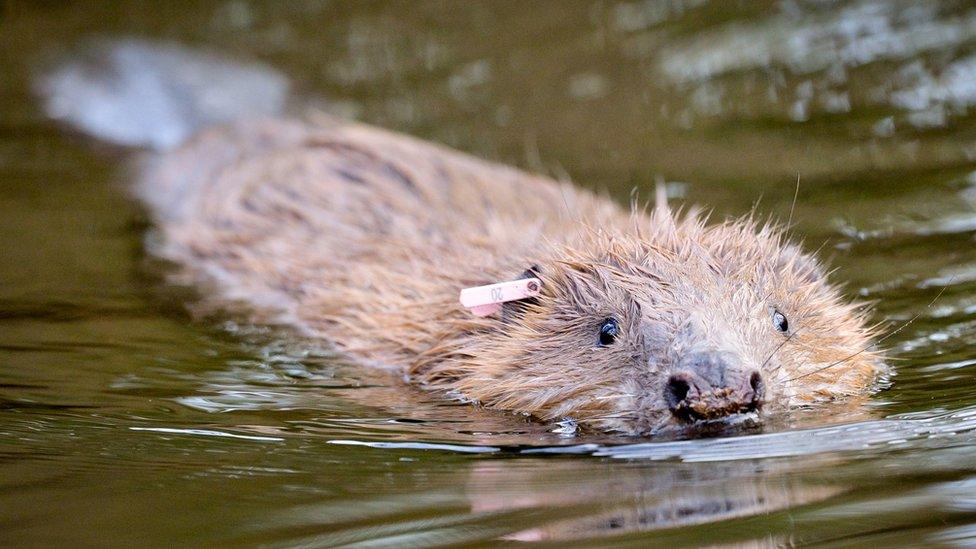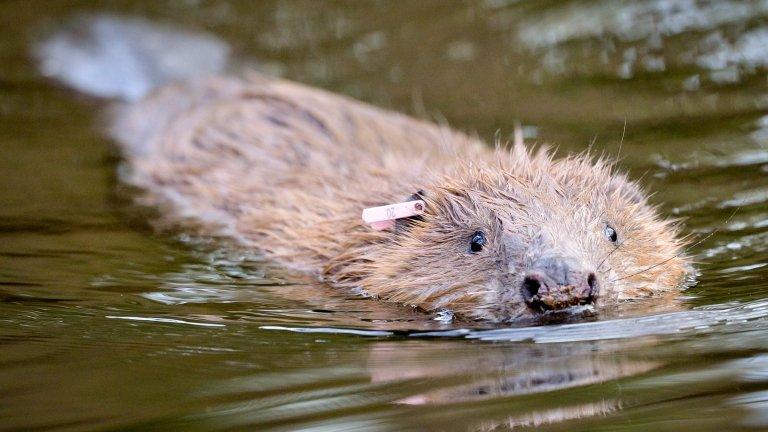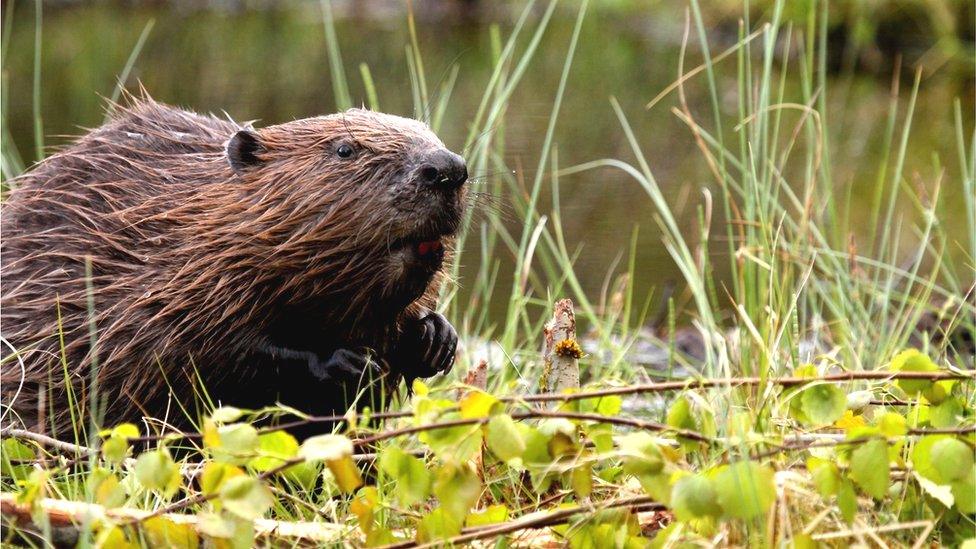Beavers back in London after 400-year absence
- Published

Beavers are gradually returning to the UK
Beavers have been brought back to London for the first time in more than 400 years to help restore nature and river habitat and reduce flood risks.
A male and female beaver, both aged two, were released into a specially designed enclosure in the grounds of Forty Hall Farm in Enfield on Thursday.
The species was hunted to extinction in Britain in the 16th Century for its fur, glands and meat.
Enfield Council and Capel Manor College devised the north London project.
Ian Barnes, Enfield Council's deputy leader, said it was "quite emotional" when the pair - who have been temporarily nicknamed Justin Beaver and Sigourney Beaver - were released into the wild.
The council plans to give residents the chance to choose their permanent names.
Natural engineers
Mr Barnes added: "They're not just beautiful creatures, they're so good in the ecosystem, they encourage other animals and insects because of the ponds and dams they make.
"They do an incredible job and that's why we are so pleased that, after 400 years, they're back in Enfield."

A pair of beavers were released in Enfield on Thursday
Beavers are seen as natural engineers who restore wetland habitats through dam-building and felling trees, slowing, storing and filtering water in the landscape, which attracts other wildlife and reduces flooding downstream.
Their reintroduction is part of a two-year plan by the council to tackle the effects of climate change.
Beavers are now found living in the wild on a number of rivers in Scotland and England through official trials and illegal releases or escapes, and have also been introduced into enclosures in a number of English counties.
Conservationists are waiting on a government decision on allowing applications to release the animals into the wild under certain criteria.
Dr Roisin Campbell-Palmer, beaver restoration lead at the Beaver Trust, hopes the pair will reproduce by next year.
'Beaver cam'
She said: "We're delighted to be returning beavers to live in such close proximity to this urban area, working with an extended veterinary team to ensure highest welfare for the animals."
On his release, the male beaver - from a family in a flood reduction project in Yorkshire - headed straight into the pond.
The female, a wild beaver from the Tay catchment in Scotland, had to be coaxed out of her crate when she was released a little later.
She eventually emerged into a shallow stream and headed off in the direction of the male.
There are plans for a publicly viewable "beaver cam" to be set up, once the pair have settled into their enclosure.

Follow BBC London on Facebook, external, Twitter , externaland Instagram, external. Send your story ideas to hellobbclondon@bbc.co.uk, external
Related topics
- Published8 January 2022

- Published10 August 2021
